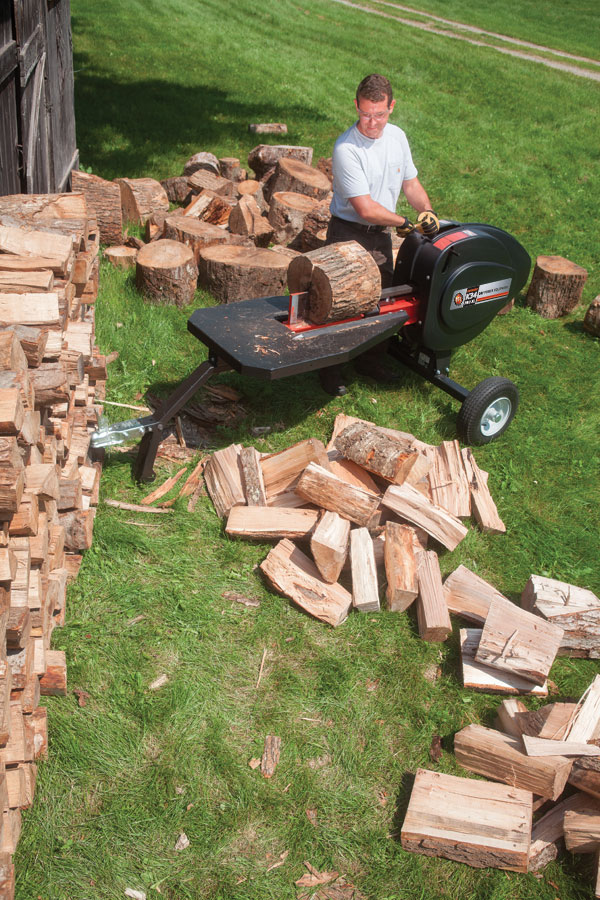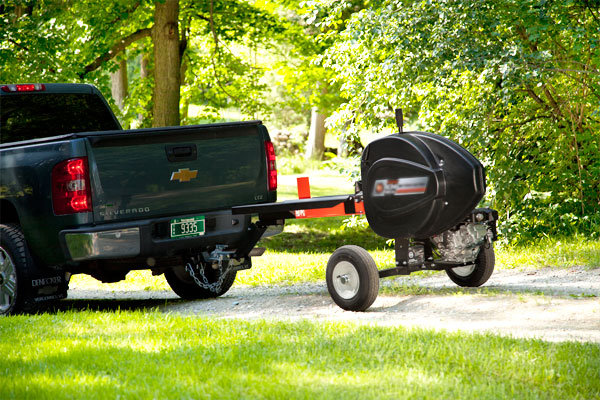5 Essential Features to Look for in a Log Splitter
 If you’ve started shopping for a log splitter, or are thinking of upgrading from swinging the ol’ maul for hours on end, you’ll need to know what features to look for. There is a lot of information out there about log splitters, from important facts all the way down to virtually meaningless specifications. How do you know what’s important and what’s just fluff? We’ve spent a lot of years designing, building, and talking about log splitters. These are the top 5 features that we have found every shopper should look for:
If you’ve started shopping for a log splitter, or are thinking of upgrading from swinging the ol’ maul for hours on end, you’ll need to know what features to look for. There is a lot of information out there about log splitters, from important facts all the way down to virtually meaningless specifications. How do you know what’s important and what’s just fluff? We’ve spent a lot of years designing, building, and talking about log splitters. These are the top 5 features that we have found every shopper should look for:
1. Flywheel or hydraulic?
The biggest distinction in the world of log splitters these days is between the old-school hydraulics and the new-kid-on-the-block flywheel splitters. Hydraulic log splitters use hydraulic pumps and valves to gradually push a splitting ram through a log. The process is slow, often taking upwards of 15 or 20 seconds to complete a single split. Flywheel log splitters, on the other hand, use a system of heavy flywheels and a pinion gear. Energy from the engine is stored in the flywheel and when the user activates the handle, it is all discharged at once, popping logs apart with one quick burst. This makes them by far the fastest log splitters available. Think about how important speed is to you as you decide whether to go hydraulic or flywheel.
2. Splitting power.
Once you’ve decided which camp you’re in – flywheel or hydraulic – you can decide what range of splitting power will be best for your needs. If you’re going the hydraulic route, this means you’ll be looking at tonnage. Tonnage is the amount of force the splitting ram exerts on the log – the higher the tonnage, the bigger, tougher, denser, and knottier logs it can handle. If you’re stepping up to the speed and efficiency of a flywheel splitter, you can look at tonnage equivalencies. For example, while the power of flywheel log splitters cannot be measured in terms of tons, the DR Premier RapidFire Flywheel Log Splitter can outsplit any 22-ton hydraulic unit. Similarly, the Pro model can outsplit any 28-ton, and the Pro-XL can outsplit any 34-ton.
 3. Towing.
3. Towing.
Are you going to be splitting in the same place every time? Will you want to store the splitter somewhere different? If you’ll need to move your log splitter around pretty frequently, you’ll want to have an easy way to tow it. Many models are towable with a pin hitch on your property. Others are DOT-approved for towing on public roads. Make sure the model you choose meets your transportation needs. If it doesn’t come standard with the towing hitch that you’d like, see if there’s an optional kit to make it towable.
4. Log size.
You’ll also want to be aware of the maximum size log that any given splitter can handle. As you shop, know what the largest log you’ll need to split is (diameter and length), and narrow down your options by those that can handle that size. There’s no point in investing in a splitter that can only handle logs 18″ in diameter if you regularly need to split those that are 24″ or larger!
5. Ease-of-use features.
Many log splitters have various other features that simply make them easier to use. For example, horizontal-vertical log splitters allow you to split either in the traditional horizontal orientation or in a vertical position such that big, heavy logs can be split right on the ground (i.e. no lifting!). Others, such as the DR RapidFires, are available with a work table that keeps split logs at a comfortable working height for resplitting. No need to bend down and pick up the pieces for their second, third, or fourth split. Look for ease-of-use features like this as you browse log splitters.
Want to learn more about DR Log Splitters?
Order your FREE Buyer's Guide & DVD!

What's inside
- 24-Page Buyer's Guide
- Action-Packed DVD
- Money-Saving Promotions